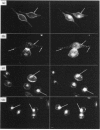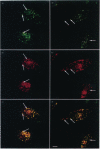Abstract
Internalization of the NK1 receptor (NK1R) and substance P was observed in cells transfected with cDNA encoding the rat NK1R by using anti-receptor antibodies and cyanine 3-labelled substance P (cy3-substance P). After incubation at 4 degrees C, NK1R immunoreactivity and cy3-substance P were confined to the plasma membrane. Within 3 min of incubation at 37 degrees C, NK1R immunoreactivity and cy3-substance P were internalized into small intracellular vesicles located beneath the plasma membrane. Fluorescein isothiocyanate-labelled transferrin and cy3-substance P were internalized into the same vesicles, identifying them as early endosomes. After 60 min at 37 degrees C, NK1R immunoreactivity was detected in larger, perinuclear vesicles. Internalization of 125I-labelled substance P was studied by using an acid wash to dissociate cell-surface label from that which has been internalized. Binding reached equilibrium after incubation for 60 min at 4 degrees C with no detectable internalization. After 10 min incubation at 37 degrees C, 83.5 +/- 1.0% of specifically bound counts were internalized. Hyperosmolar sucrose and phenylarsine oxide, which are inhibitors of endocytosis, prevented internalization of 125I-labelled substance P and accumulation of NK1R immunoreactivity into endosomes. Acidotropic agents caused retention of 125I-labelled substance P within the cell and inhibited degradation of the internalized peptide. Continuous incubation of cells with substance P at 37 degrees C reduced 125I-substance P binding at the cell surface. Therefore, substance P and its receptor are internalized into early endosomes within minutes of binding, and internalized substance P is degraded. Internalization depletes NK1Rs from the cell surface and may down-regulate the response of a cell to substance P.
Full text
PDF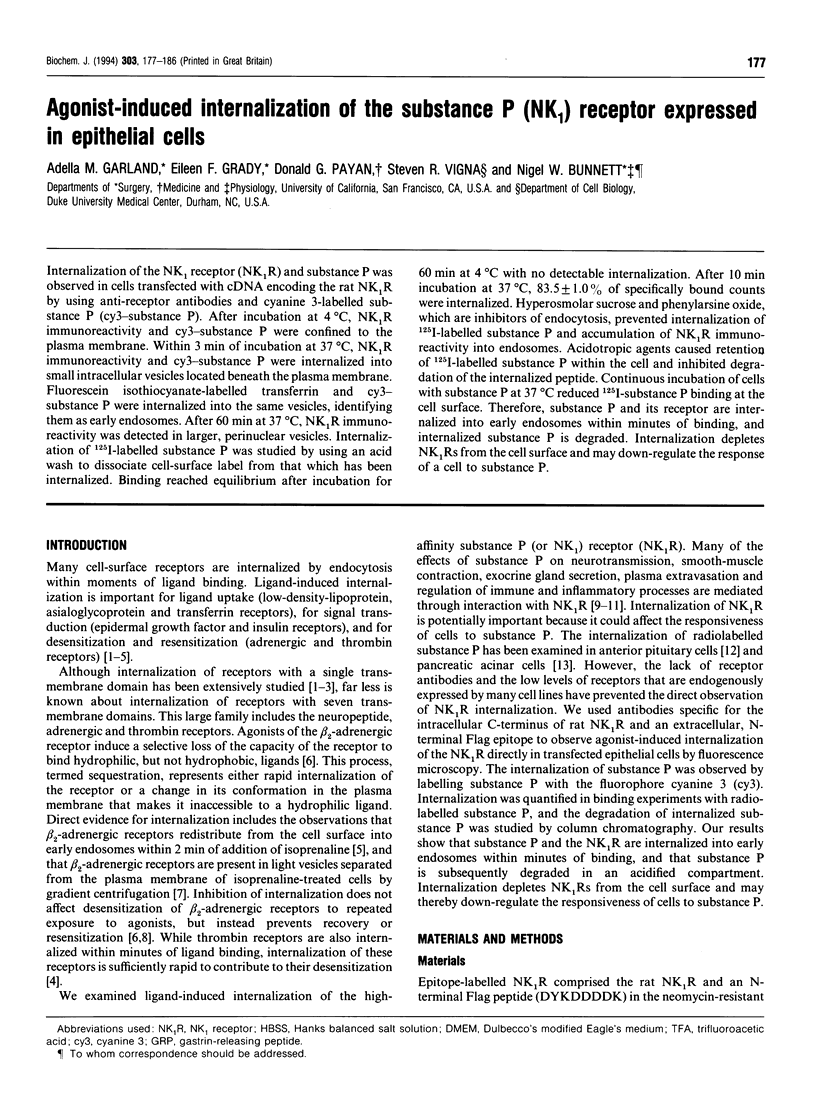
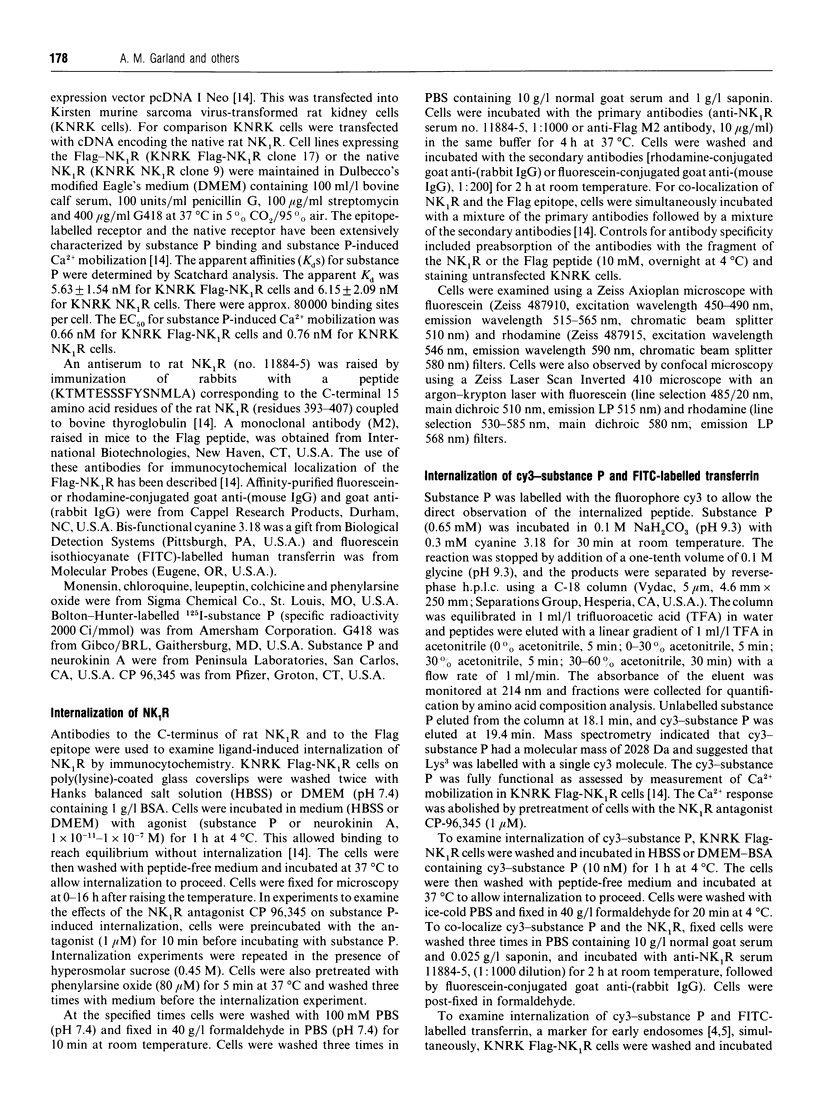

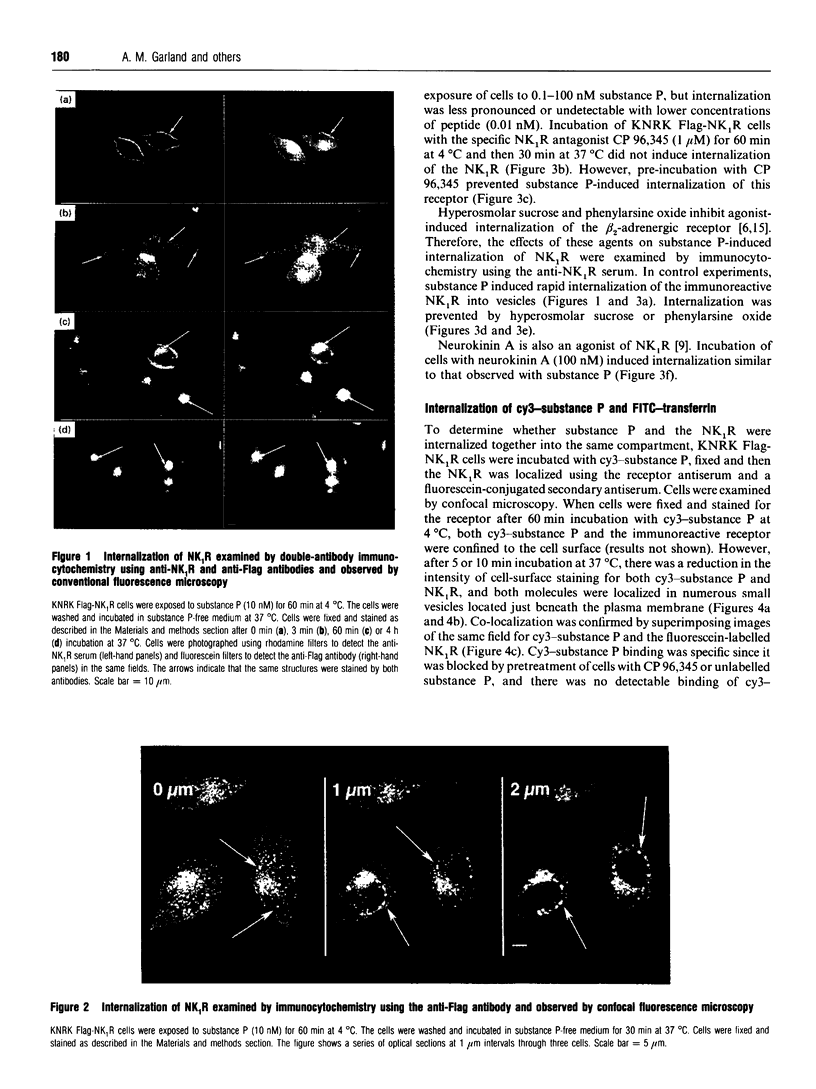
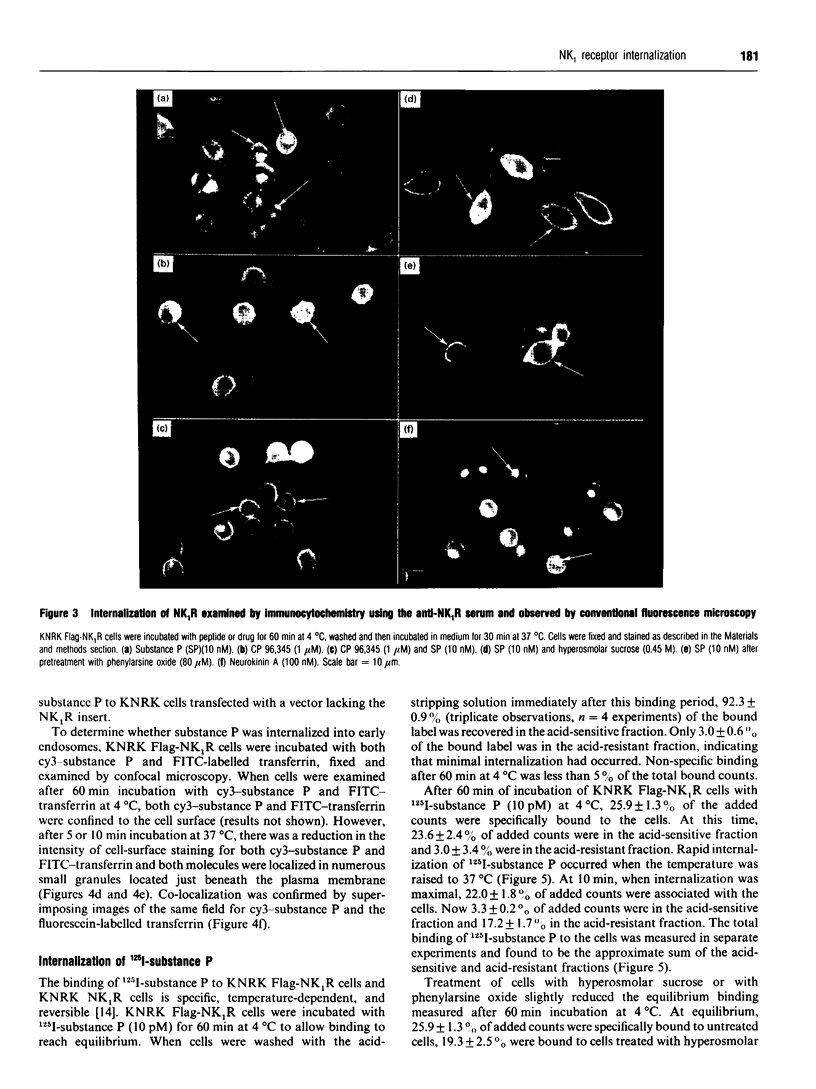
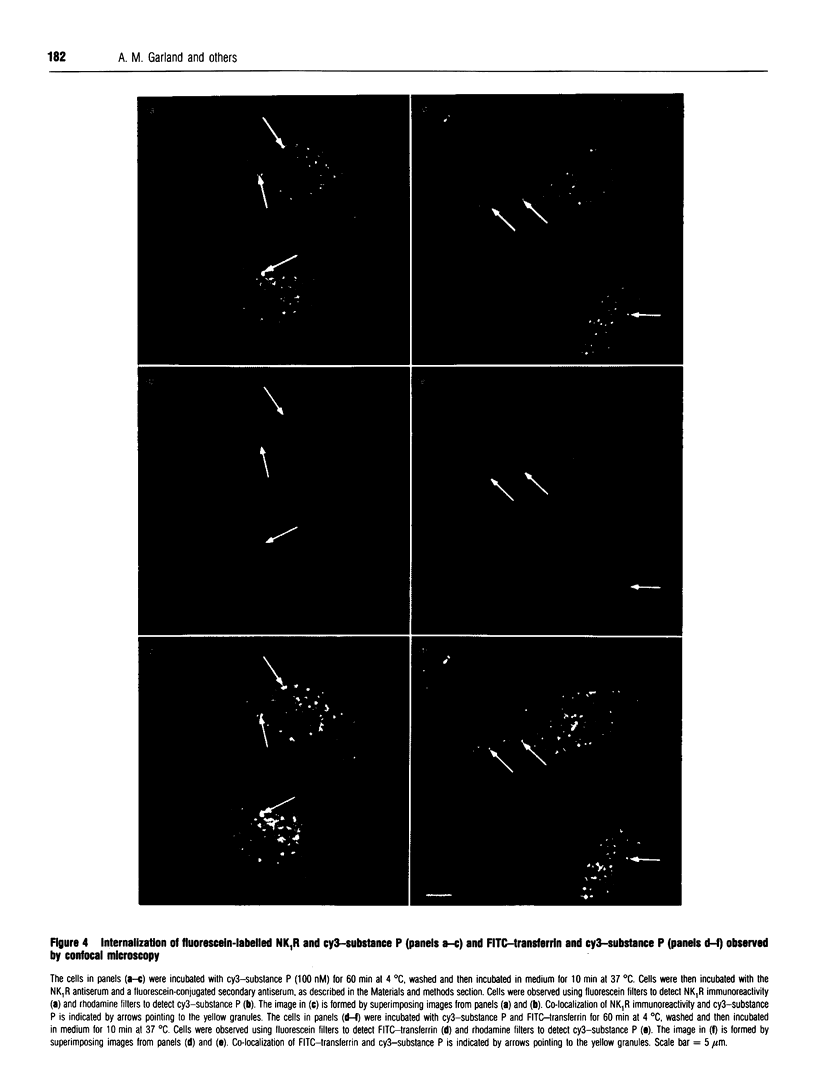
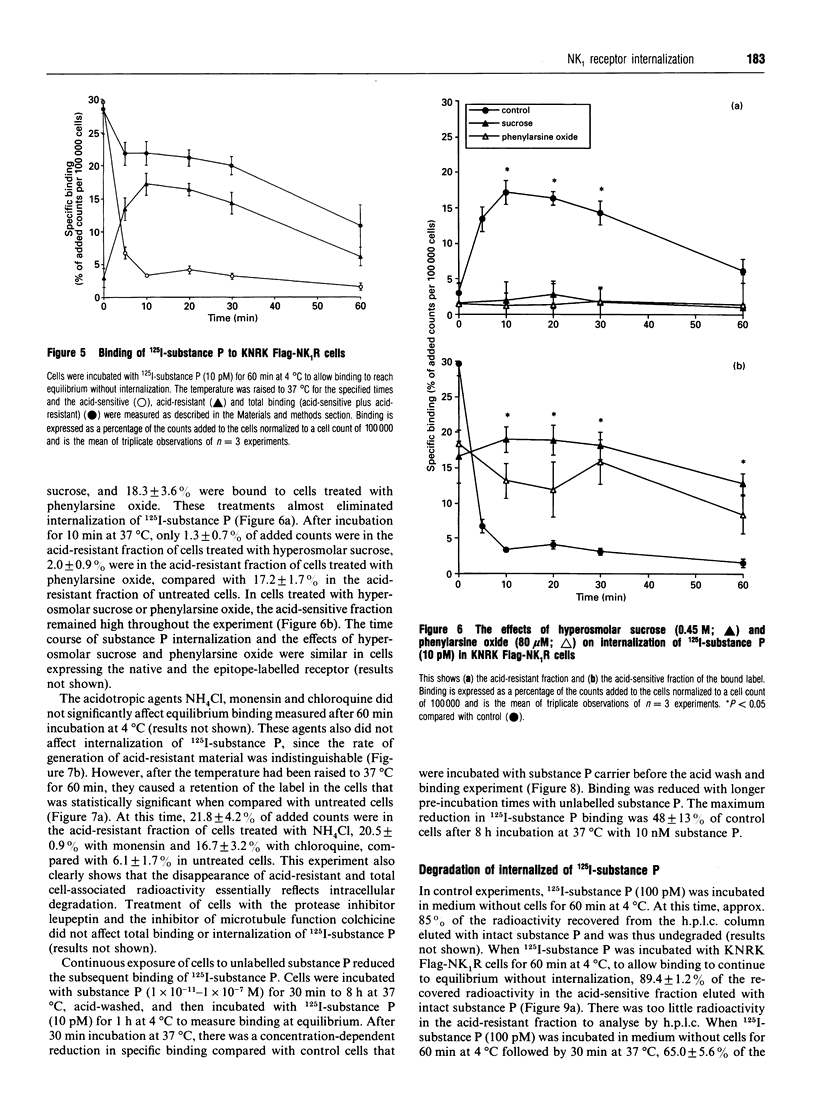
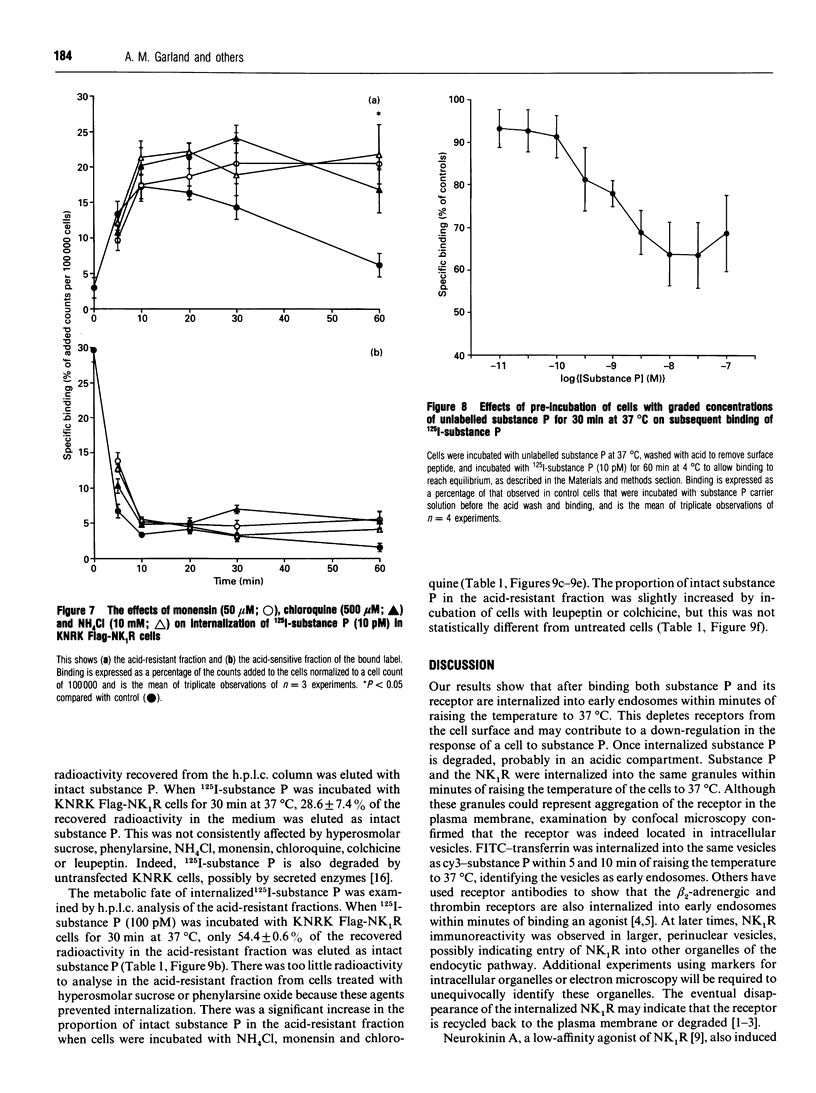
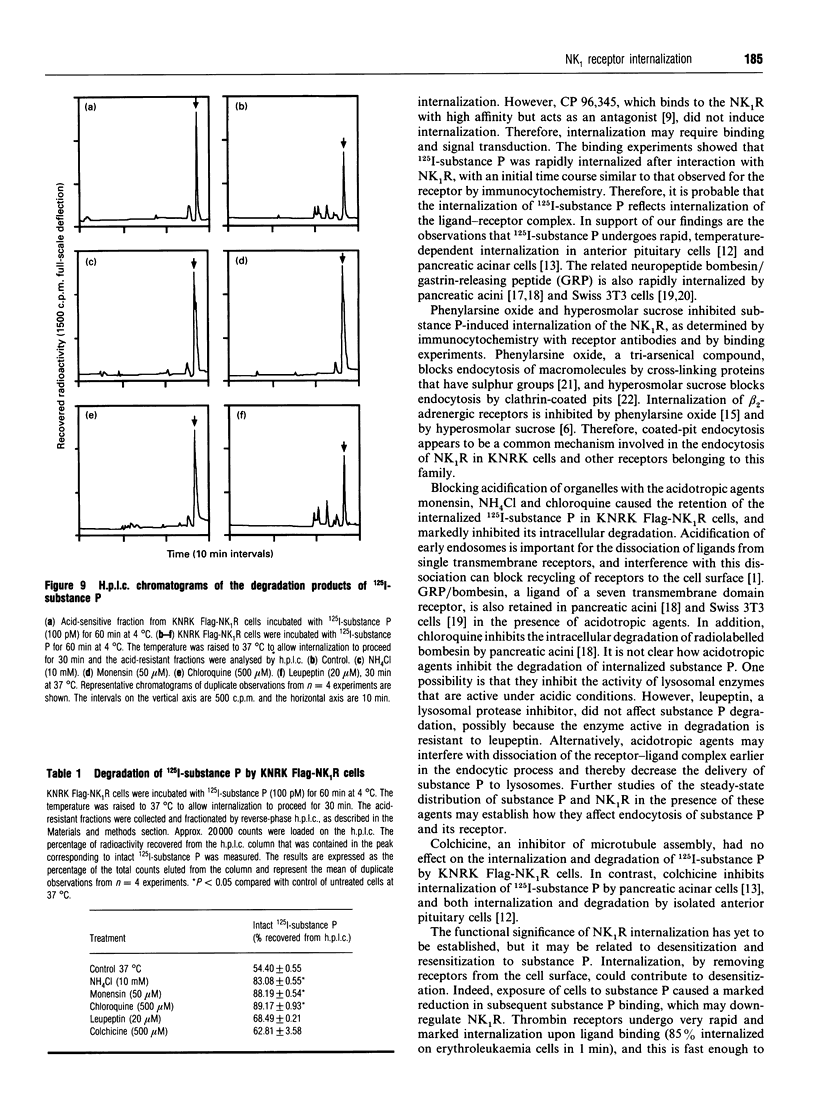
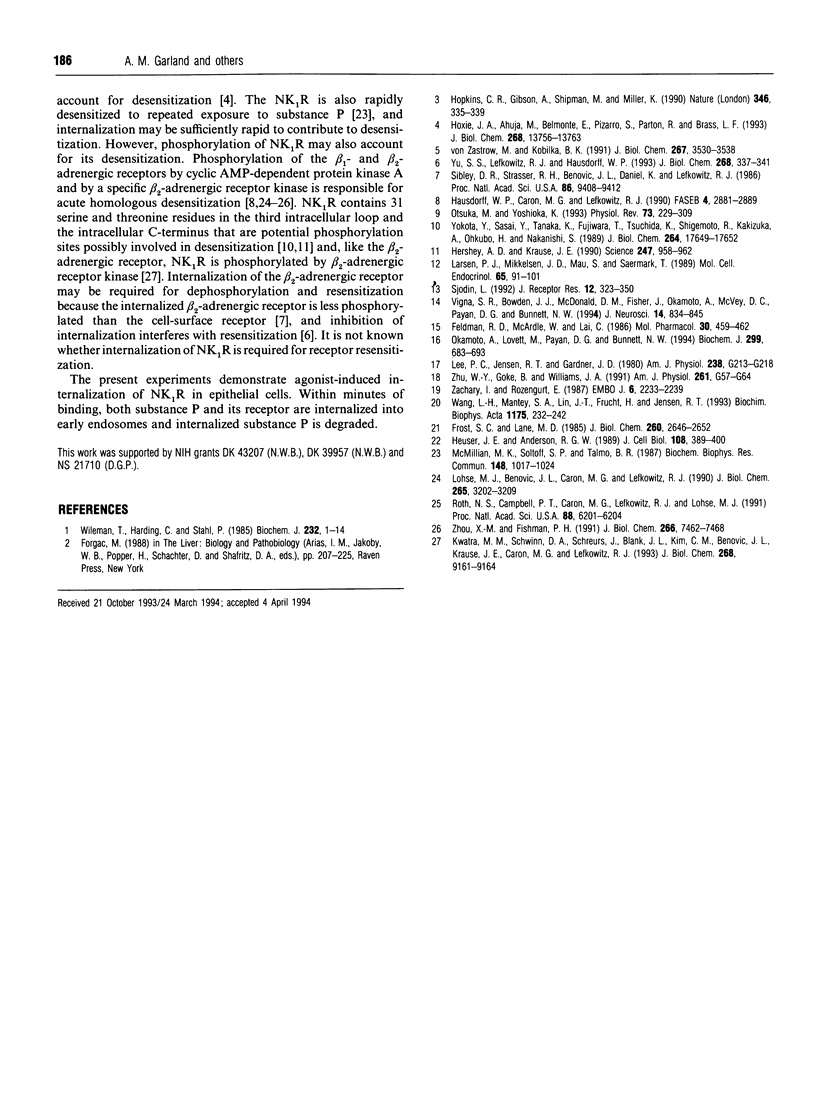
Images in this article
Selected References
These references are in PubMed. This may not be the complete list of references from this article.
- Feldman R. D., McArdle W., Lai C. Phenylarsine oxide inhibits agonist-induced changes in photolabeling but not agonist-induced desensitization of the beta-adrenergic receptor. Mol Pharmacol. 1986 Nov;30(5):459–462. [PubMed] [Google Scholar]
- Frost S. C., Lane M. D. Evidence for the involvement of vicinal sulfhydryl groups in insulin-activated hexose transport by 3T3-L1 adipocytes. J Biol Chem. 1985 Mar 10;260(5):2646–2652. [PubMed] [Google Scholar]
- Hausdorff W. P., Caron M. G., Lefkowitz R. J. Turning off the signal: desensitization of beta-adrenergic receptor function. FASEB J. 1990 Aug;4(11):2881–2889. [PubMed] [Google Scholar]
- Hershey A. D., Krause J. E. Molecular characterization of a functional cDNA encoding the rat substance P receptor. Science. 1990 Feb 23;247(4945):958–962. doi: 10.1126/science.2154852. [DOI] [PubMed] [Google Scholar]
- Heuser J. E., Anderson R. G. Hypertonic media inhibit receptor-mediated endocytosis by blocking clathrin-coated pit formation. J Cell Biol. 1989 Feb;108(2):389–400. doi: 10.1083/jcb.108.2.389. [DOI] [PMC free article] [PubMed] [Google Scholar]
- Hopkins C. R., Gibson A., Shipman M., Miller K. Movement of internalized ligand-receptor complexes along a continuous endosomal reticulum. Nature. 1990 Jul 26;346(6282):335–339. doi: 10.1038/346335a0. [DOI] [PubMed] [Google Scholar]
- Hoxie J. A., Ahuja M., Belmonte E., Pizarro S., Parton R., Brass L. F. Internalization and recycling of activated thrombin receptors. J Biol Chem. 1993 Jun 25;268(18):13756–13763. [PubMed] [Google Scholar]
- Kwatra M. M., Schwinn D. A., Schreurs J., Blank J. L., Kim C. M., Benovic J. L., Krause J. E., Caron M. G., Lefkowitz R. J. The substance P receptor, which couples to Gq/11, is a substrate of beta-adrenergic receptor kinase 1 and 2. J Biol Chem. 1993 May 5;268(13):9161–9164. [PubMed] [Google Scholar]
- Larsen P. J., Mikkelsen J. D., Mau S., Saermark T. Binding and internalization of a iodinated substance P analog by cultured anterior pituitary cells. Mol Cell Endocrinol. 1989 Aug;65(1-2):91–101. doi: 10.1016/0303-7207(89)90169-x. [DOI] [PubMed] [Google Scholar]
- Lee P. C., Jensen R. T., Gardner J. D. Bombesin-induced desensitization of enzyme secretion in dispersed acini from guinea pig pancreas. Am J Physiol. 1980 Mar;238(3):G213–G218. doi: 10.1152/ajpgi.1980.238.3.G213. [DOI] [PubMed] [Google Scholar]
- Lohse M. J., Benovic J. L., Caron M. G., Lefkowitz R. J. Multiple pathways of rapid beta 2-adrenergic receptor desensitization. Delineation with specific inhibitors. J Biol Chem. 1990 Feb 25;265(6):3202–3211. [PubMed] [Google Scholar]
- McMillian M. K., Soltoff S. P., Talamo B. R. Rapid desensitization of substance P- but not carbachol-induced increases in inositol trisphosphate and intracellular Ca++ in rat parotid acinar cells. Biochem Biophys Res Commun. 1987 Nov 13;148(3):1017–1024. doi: 10.1016/s0006-291x(87)80233-4. [DOI] [PubMed] [Google Scholar]
- Okamoto A., Lovett M., Payan D. G., Bunnett N. W. Interactions between neutral endopeptidase (EC 3.4.24.11) and the substance P (NK1) receptor expressed in mammalian cells. Biochem J. 1994 May 1;299(Pt 3):683–693. doi: 10.1042/bj2990683. [DOI] [PMC free article] [PubMed] [Google Scholar]
- Otsuka M., Yoshioka K. Neurotransmitter functions of mammalian tachykinins. Physiol Rev. 1993 Apr;73(2):229–308. doi: 10.1152/physrev.1993.73.2.229. [DOI] [PubMed] [Google Scholar]
- Roth N. S., Campbell P. T., Caron M. G., Lefkowitz R. J., Lohse M. J. Comparative rates of desensitization of beta-adrenergic receptors by the beta-adrenergic receptor kinase and the cyclic AMP-dependent protein kinase. Proc Natl Acad Sci U S A. 1991 Jul 15;88(14):6201–6204. doi: 10.1073/pnas.88.14.6201. [DOI] [PMC free article] [PubMed] [Google Scholar]
- Sibley D. R., Strasser R. H., Benovic J. L., Daniel K., Lefkowitz R. J. Phosphorylation/dephosphorylation of the beta-adrenergic receptor regulates its functional coupling to adenylate cyclase and subcellular distribution. Proc Natl Acad Sci U S A. 1986 Dec;83(24):9408–9412. doi: 10.1073/pnas.83.24.9408. [DOI] [PMC free article] [PubMed] [Google Scholar]
- Sjödin L. Cholecystokinin-induced inhibition of endocytosis of receptor-bound substance P in pancreatic acinar cells. J Recept Res. 1992;12(3):323–350. doi: 10.3109/10799899209074799. [DOI] [PubMed] [Google Scholar]
- Vigna S. R., Bowden J. J., McDonald D. M., Fisher J., Okamoto A., McVey D. C., Payan D. G., Bunnett N. W. Characterization of antibodies to the rat substance P (NK-1) receptor and to a chimeric substance P receptor expressed in mammalian cells. J Neurosci. 1994 Feb;14(2):834–845. doi: 10.1523/JNEUROSCI.14-02-00834.1994. [DOI] [PMC free article] [PubMed] [Google Scholar]
- Wang L. H., Mantey S. A., Lin J. T., Frucht H., Jensen R. T. Ligand binding, internalization, degradation and regulation by guanine nucleotides of bombesin receptor subtypes: a comparative study. Biochim Biophys Acta. 1993 Jan 17;1175(2):232–242. doi: 10.1016/0167-4889(93)90028-n. [DOI] [PubMed] [Google Scholar]
- Wileman T., Harding C., Stahl P. Receptor-mediated endocytosis. Biochem J. 1985 Nov 15;232(1):1–14. doi: 10.1042/bj2320001. [DOI] [PMC free article] [PubMed] [Google Scholar]
- Yokota Y., Sasai Y., Tanaka K., Fujiwara T., Tsuchida K., Shigemoto R., Kakizuka A., Ohkubo H., Nakanishi S. Molecular characterization of a functional cDNA for rat substance P receptor. J Biol Chem. 1989 Oct 25;264(30):17649–17652. [PubMed] [Google Scholar]
- Yu S. S., Lefkowitz R. J., Hausdorff W. P. Beta-adrenergic receptor sequestration. A potential mechanism of receptor resensitization. J Biol Chem. 1993 Jan 5;268(1):337–341. [PubMed] [Google Scholar]
- Zachary I., Rozengurt E. Internalization and degradation of peptides of the bombesin family in Swiss 3T3 cells occurs without ligand-induced receptor down-regulation. EMBO J. 1987 Aug;6(8):2233–2239. doi: 10.1002/j.1460-2075.1987.tb02495.x. [DOI] [PMC free article] [PubMed] [Google Scholar]
- Zhou X. M., Fishman P. H. Desensitization of the human beta 1-adrenergic receptor. Involvement of the cyclic AMP-dependent but not a receptor-specific protein kinase. J Biol Chem. 1991 Apr 25;266(12):7462–7468. [PubMed] [Google Scholar]
- Zhu W. Y., Göke B., Williams J. A. Binding, internalization, and processing of bombesin by rat pancreatic acini. Am J Physiol. 1991 Jul;261(1 Pt 1):G57–G64. doi: 10.1152/ajpgi.1991.261.1.G57. [DOI] [PubMed] [Google Scholar]
- von Zastrow M., Kobilka B. K. Ligand-regulated internalization and recycling of human beta 2-adrenergic receptors between the plasma membrane and endosomes containing transferrin receptors. J Biol Chem. 1992 Feb 15;267(5):3530–3538. [PubMed] [Google Scholar]



